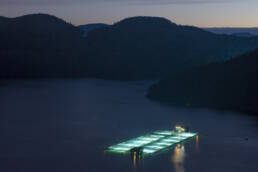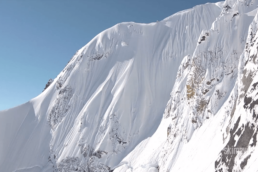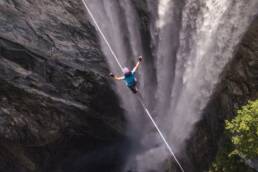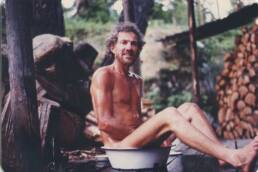There’s something in the waters of the Pacific Northwest. Under the surface of the pristine tourism-marketed coast, the effects of an antiquated industry is killing our wild fish. The state of Washington curbs development of Atlantic salmon farms, but British Columbia continues to play along in the face of First Nations defiance. By Andrew Findlay
From the air, a fish farm appears innocuous: a float house tethered to a half-dozen circular nets. If not for the ripple on the water during feed time, there wouldn’t appear to be much happening. Beneath the surface, however, a storm of controversy sits. There’s a murky world of unhappy and diseased fish, sea lice, toxic algal blooms and a host of unanswered scientific questions. A profound level of public mistrust has plagued the fish farming industry ever since it dropped anchor on British Columbia’s west coast in the 1970s. The controversy shows little signs of abating. In 2016, a disease deadly to salmon called heart and skeletal muscle inflammation (HSMI) was identified in huge numbers at a BC salmon farm. The study, led by Kristi Miller, a Fisheries and Oceans Canada (DFO) molecular geneticist, examined fish tissue samples collected between 2013 and 2014, and found that more than 80 per cent of sampled fish had HSMI, a disease already well-documented in Norway and known to cause mortality rates of up to 30 per cent at fish farms. But that wasn’t all Miller discovered. The virus Piscine Orthoreovirus (PRV) also occurred in a high percentage of fish that had HSMI, suggesting, as Miller wrote in her peer-reviewed paper on the study, “a statistically significant correlation between PRV prevalence and load with the occurrence and severity of HSMI.”
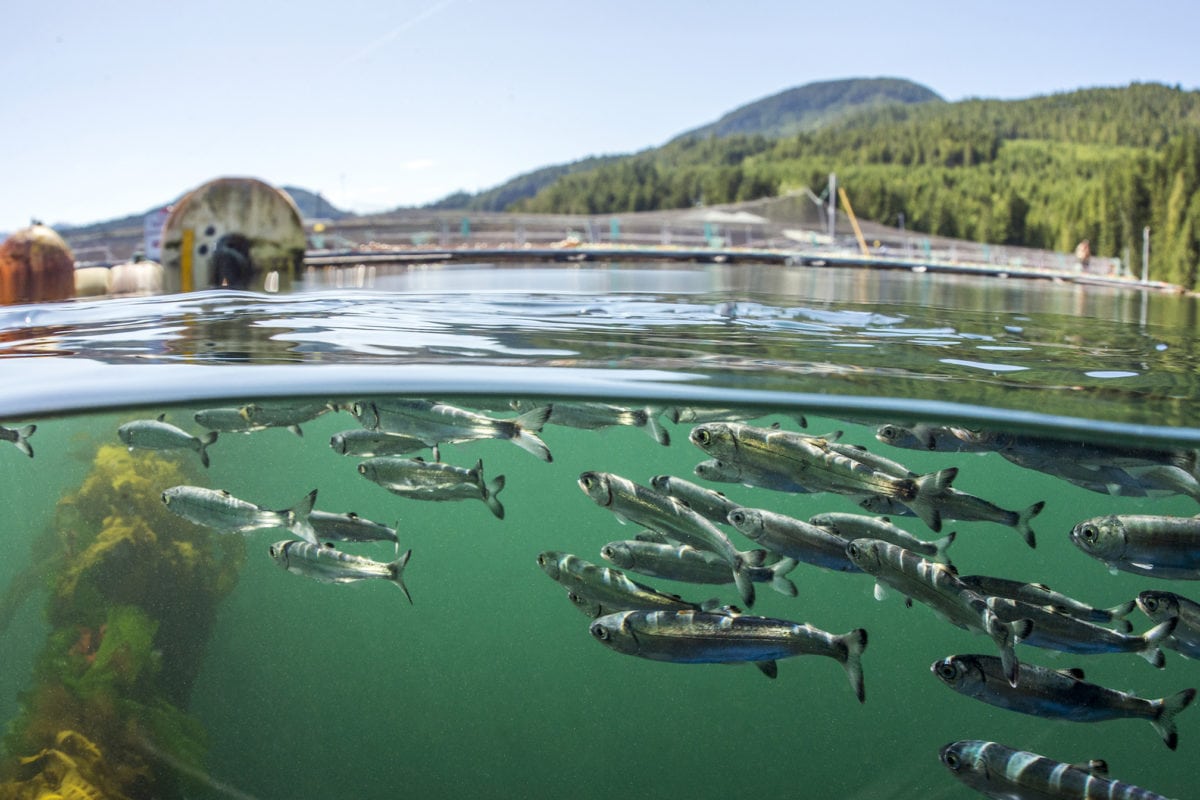
It backed up earlier findings from 2010, when scientists from Columbia University and Norway identified PRV as a potential cause of HSMI, prompting the researchers to warn that urgent “measures be taken to control PRV … due to the potential for transmission to [the] wild salmon population.” Anti-fish farm activists pounced on this information, a smoking gun in the form of a virus common to salmon that lies in wait in the fish’s circulatory system until some sort of stress—like ocean temperature spikes, sea lice or congested fish farm conditions—causes PRV to trigger HSMI. It raises the big question: what will happen if PRV is transmitted from farmed to wild fish?
I meet Miller at the Pacific Biological Station in Nanaimo, the DFO’s preeminent West Coast research facility. She strides down the hall into a cavernous lobby to greet me, dressed smartly in a skirt, blouse and heeled shoes; it’s a fashion sense that seems at odds with the drab institutional decor of the research station. An American who earned her PhD at Stanford University, Miller has worked at the Nanaimo facility for 25 years. It was only during the 2009 Cohen Commission of Inquiry into the Decline of Sockeye Salmon in the Fraser River, however, that she was deemed too outspoken. Silenced by then-Prime Minister Stephen Harper’s paranoid crackdown on science, Miller rallied against the muzzling and became known as the scientist unwilling to stay silent.
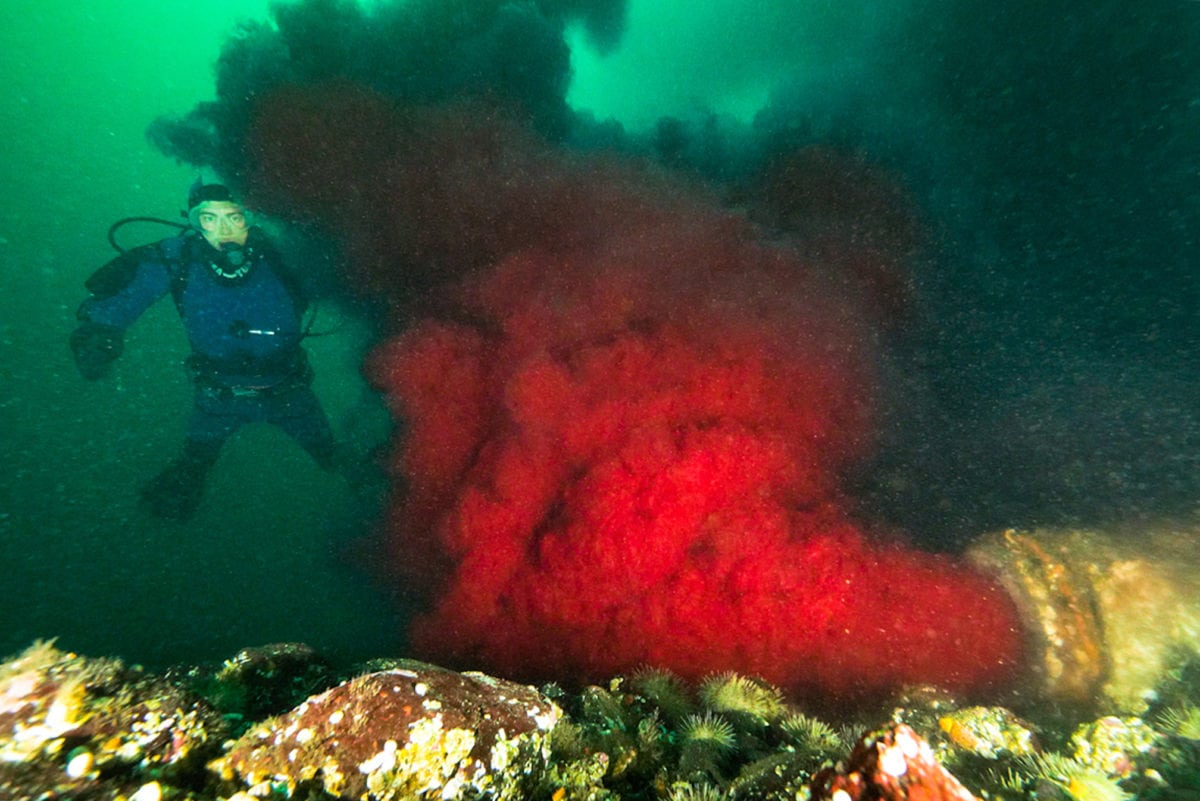
With a laminated guest ID clipped to my shirt, I follow Miller to her second floor office, which looks out over the shoreline. Pile drivers noisily pound away on an upgrade to the dock where DFO research vessels tie up. BC Ferries boats sail past every two hours. Three computer screens form a crescent on her large desk, and adjacent grey and red filing cabinets sit against the wall. Miller tells me she loves science, and science is perhaps the biggest casualty in the fish farming controversy.
“It’s hard for the salmon industry to be objective when they rely on veterinarians who have worked for the industry their whole lives,” Miller says. “This undermines the industry’s credibility in the public’s mind.”
The industry took another major credibility hit late last November when photographer Tavish Campbell captured graphic underwater video showing a stream of blood-red liquid, the waste from processed farmed salmon, being pumped straight into the sea at Brown’s Bay Packing Company, and at a farmed fish processing facility in Tofino, British Columbia. The timing couldn’t have been worse, as debate swirls around PRV, which infected fish carry in their bloodstream, and its link to HSMI.

“The next question is what is the risk of transmission of HSMI from farmed to wild fish populations?” Miller says, adding that public pressure is ratcheting upward.
Unpacking this pathogenic mystery will require some serious genetic sleuthing. The scientific challenge is finding tissue to sample—wild fish infected with HSMI—as the disease affects salmons’ ability to swim, making them easy prey.
Many conservationists welcome having the intellectual rigour of someone like Miller focused on fish farming. But at the same time, they question whether wild salmon can afford to wait for all the scientific evidence to trickle in before applying a more vigorous precautionary approach to farming fish in the ocean. The Canadian government’s own $25-million Cohen Commission arrived at some damning conclusions when it published its 1,000-page report in 2012, including, in Justice Bruce Cohen’s words, that “the potential harm posed by salmon farms to Fraser River sockeye is serious or irreversible.” British Columbia plays steward of a global treasure: one of the world’s last remaining wild salmon systems, home to five different species and hundreds of genetically distinct stocks. So why is Canada willing to risk this rare wild salmon treasure? Money talks, but like a chinook salmon migrating up a heavy current, the money trail is difficult to follow. One thing we do know is that it leads to Norway.
In BC, the salmon farming industry is now more than 90 per cent owned by three Norwegian companies: Marine Harvest, Cermaq and Grieg Seafood. Overall, the industry has been secretive, reactive rather than proactive, and often defensive. The DFO, which has the dual responsibility of promoting salmon aquaculture and managing wild salmon stocks, hasn’t helped the cause, prompting Commissioner Bruce Cohen to comment that if the DFO “has a mandate to promote salmon farming, there is a risk that it will act in a manner that favours the interests of the salmon farming industry over the health of wild fish stocks.”
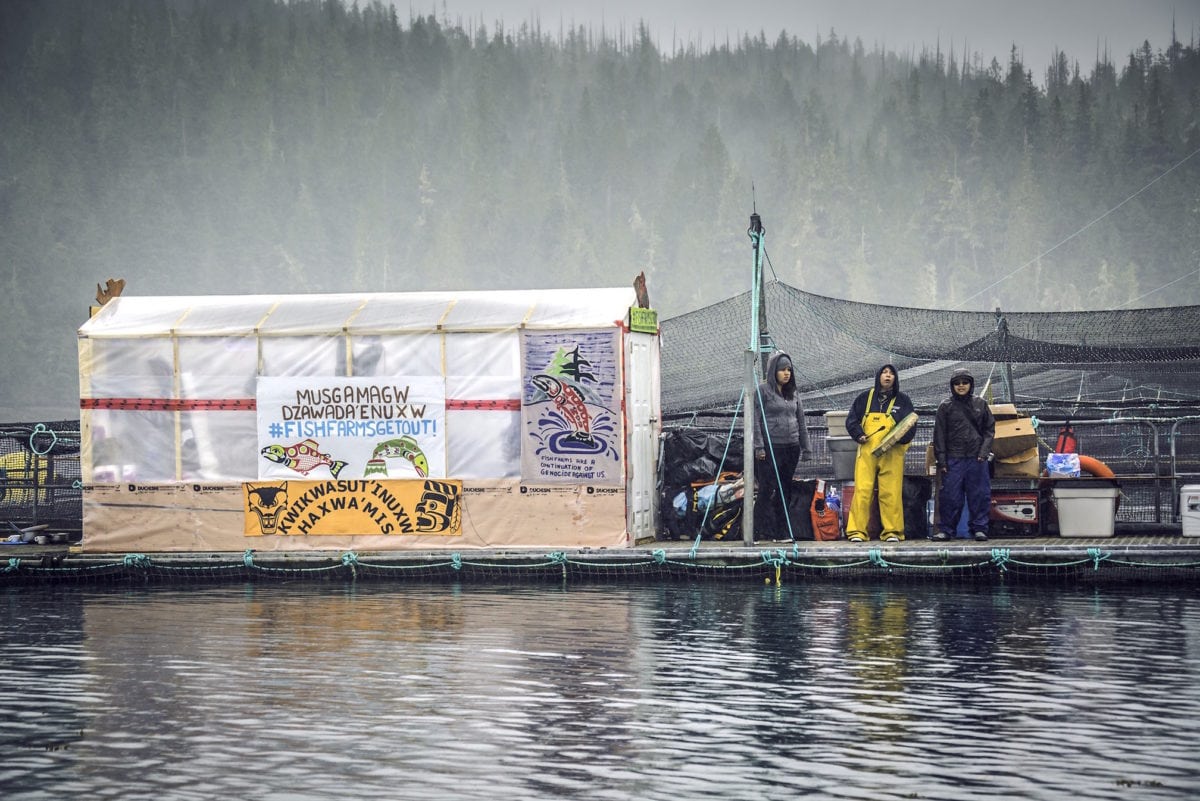
There’s also a sense that we have forfeited control of fish farming to a foreign power. Norway produces 225,000 tonnes of farmed salmon annually, or more than three times the amount produced in BC. But even in Norway, the industry has recognized that it needs to evolve. In June 2016, citing the rising costs of sea lice and fish escapes, Marine Harvest, the world’s largest fish farming company, announced that it would invest $100 million in partnership with the Norwegian firm Hauge Aqua, to develop an ocean-based closed containment system, appropriately called “the egg” because it looks like a giant egg, a white enclosed sphere that’s 90 per cent below water. In the waters of BC, open-net pen fish farming remains the status quo, using the same 30-year-old technology that propagates the same problems Norway is fixing. This enrages fish farming foes like Alexandra Morton.
Morton, who has lived in the Broughton Archipelago since 1984, has been at the front lines of the battle against fish farming for almost as long. If Kristi Miller is the calm voice of scientific reasoning, Morton is the pit bull activist. Tenacious and relentless, Morton monitors the industry closely. For over a decade, she has studied sea lice on juvenile wild salmon migrating from central BC coast inlets through the Broughton Archipelago. In a 2007 paper published in Science magazine, she and co-author Martin Krkosek predicted the collapse of local Broughton pink populations by 2015 should sea lice outbreaks continue (they didn’t collapse).
Morton has also battled big business and government in court. She won a court case filed with Ecojustice in 2015 against the DFO and Marine Harvest for failing to test farmed Atlantic salmon for PRV before transferring them to open-net pens (the DFO appealed then asked for a deferral citing new information following Miller’s study). In 2016 Morton launched another lawsuit, this time against the DFO, charging the federal agency for flouting its own fisheries regulation that forbids transferring fish from hatcheries to fish farms with “any disease or disease agent that may be harmful to the protection and conservation of fish.” Morton is a polarizing nemesis who inspires many, but also repels others with her often strident, deeply entrenched opposition to salmon farming. Like her or not, she has shone a necessary spotlight on fish farming practices. Last summer it was like an occupying army had descended on the Broughton when Morton cruised through the region aboard the Sea Shepherd Conservation Society’s 25-metre (81-foot) vessel, the R/V Martin Sheen, flying its skull and crossbones flag, monitoring the nearly 20 farms in the region and cranking up the flame on the PRV and HSMI file.
“This issue is really heating up because Marine Harvest has a virus that is infecting all their fish,” Morton told me over the phone from her base in Sointula, British Columbia. “There is something larger at play here. Norway has stopped expansion of fish farming in its own waters but Canada remains a place that is ripe for expansion.”
At the same time, members of both the ‘Namgis and the Dzawada’enuxw First Nations of Kingcome Inlet occupied Marine Harvest farms in their respective territories.
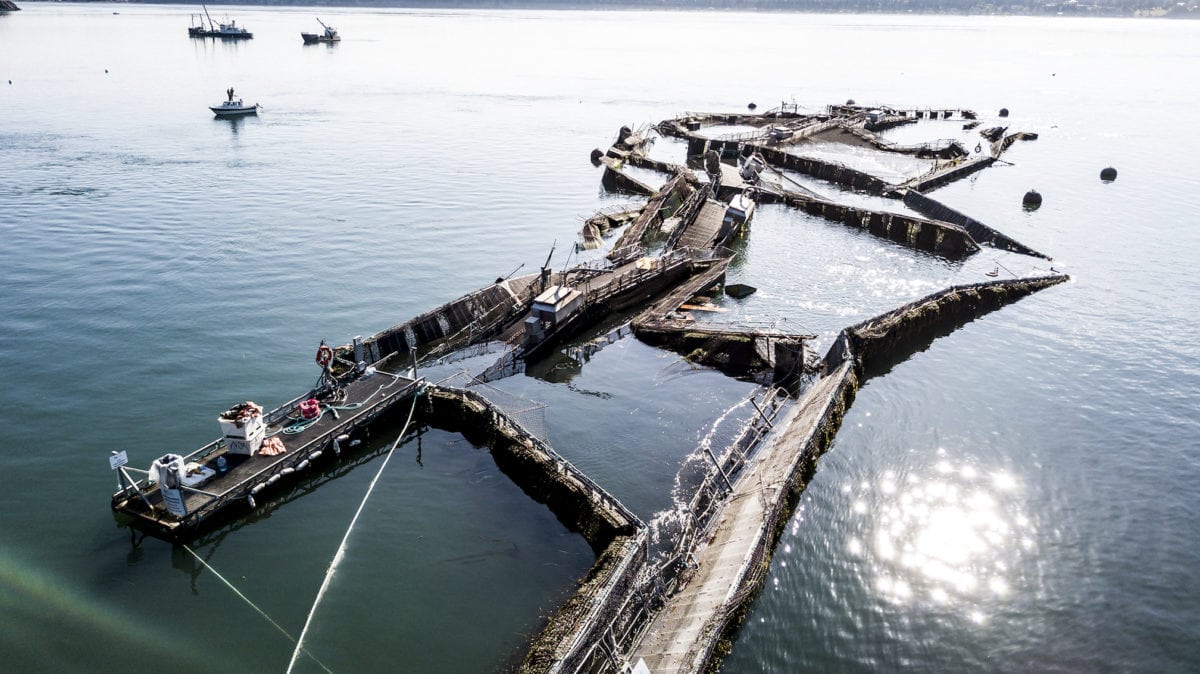
Ernest Alfred is a 37-year-old ‘Namgis native and school teacher. He spent last spring and summer occupying the Swanson Island fish farm, the only salmon aquaculture operation in traditional ‘Namgis territory. “Fish farming was forced upon our grandparents,” Alfred says. “For 30 years, we have been fighting open-net pens farms.”
Early last summer, Marine Harvest agreed to remove fish from the Swanson Island farm in an effort to repair its relationship with the ‘Namgis. But if folks like Alfred have their way, there is no room for negotiation. On the other side of Vancouver Island, fish farming has been less in the spotlight, but just as controversial. Clayoquot Sound has been an environmental hot-button zone since the logging protests there in the early 1990s. However, the issue of fish farming is far from black and white in the Clayoquot. Cermaq is the big player there, with permits for 16 salmon farms in the sound and a protocol agreement with the Ahousaht First Nation in whose traditional territory the company operates. In 2015, Cermaq tried to make fish farm number 17 in Yaakswiis Bay across from the salmon-bearing Atleo River. Ahousaht activists, dubbed the Yaakswiis warriors, managed to shut the operation down before it got started. The following year four Ahousaht members were arrested for trying to prevent Cermaq from restocking its Dixon Bay farm. They had the support of Dan Lewis, a seasoned activist and the founder of the conservation group Clayoquot Action. Lewis has had fish farming in his crosshairs for decades. “We’re not advocating for closed containment,” he says about the often-touted alternative to conventional open-net pen fish farming, “we want investment in conservation and management of wild salmon.” But, according to a recent study by Simon Fraser University researcher Michael Price, that investment gets a failing grade. In a report published last summer in the Journal of Fisheries and Aquatic Sciences, Price concludes that the DFO lacks adequate data to assess the status of 50 per cent of all “managed salmon populations along BC’s north and central coasts.” Furthermore, he reported that annual counts of spawning streams have declined by 70 per cent since the 1980s.
“This issue is really heating up because Marine Harvest has a virus that is infecting all their fish,” says Alex Morton. “There is something larger at play here. Norway has stopped expansion of fish farming in its own waters but Canada remains a place that is ripe for expansion.”
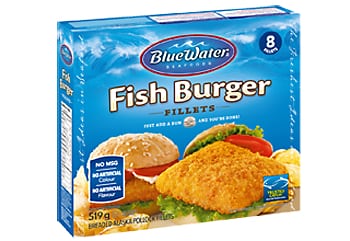 This begs the question: if we lack adequate data on wild salmon stocks, how can we hope to gauge the impacts of salmon aquaculture on wild salmon?
This begs the question: if we lack adequate data on wild salmon stocks, how can we hope to gauge the impacts of salmon aquaculture on wild salmon?
People like Lewis and Morton, who would like to see open-net pen salmon farming eradicated from BC waters, best not hold their breath. Salmon farming, like it or not, is growing rapidly. A recent report by the accounting firm MNP showed that between 2013 and 2016 the BC industry grew 40 per cent in terms of revenue to government, while the average annual farm-gate value of farmed salmon between 2011 and 2015 was nearly $740 million. And, according to a recent World Bank study, by 2030, 62 per cent of all fish consumed globally will be farm raised. But this forecast doesn’t tell the whole story. Besides tilapia, a commonly farm-raised species native to Africa that is herbivorous (and is the fourth most consumed fish in the United States), most farmed fish are carnivores, including salmon. In other words, they eat other fish, or smaller organisms. More than 15 years ago Dr. William Rees, the UBC professor responsible for the ecological footprint analysis model, turned his lens on salmon aquaculture. The results were sobering. His analysis concluded that it took 100,000 tonnes of fish feed to produce 40,000 tonnes of market-ready farmed salmon in BC. In other words, salmon aquaculture results in a net global loss of fish protein.
Land-based closed containment has long been heralded as a solution to fish farming’s environmental downsides, a way to have our farmed fish and eat it with a clean conscience. However farming salmon in land-based tanks is expensive, requiring considerable energy inputs to run pumps and filtration systems. It’s also technically challenging, as the people behind Kuterra have learned since this land-based salmon farm near Port McNeill, British Columbia, dropped its first batch of smolts in the tanks in 2013. Established as a wholly owned ‘Namgis entity, and bankrolled by a host of NGOs and foundations, including Tides Canada as well as several government agencies, Kuterra was meant to demonstrate that land-based fish farming can be done and be done profitably. It has been a partial success, according to spokesperson Josephine Mrozewski, who says: “We were early adopters so we expected challenges.”
The biological challenges included early maturing fish and slower than expected growth rates, both of which were linked to water quality issues. Though Morzewksi says these technical challenges have been more or less addressed, Kuterra now faces the challenge of economies of scale and the need to grow. “Scale was always going to be an issue,” she says. “We’re at 300 tonnes per year but we need to reach 3,000 tonnes.”
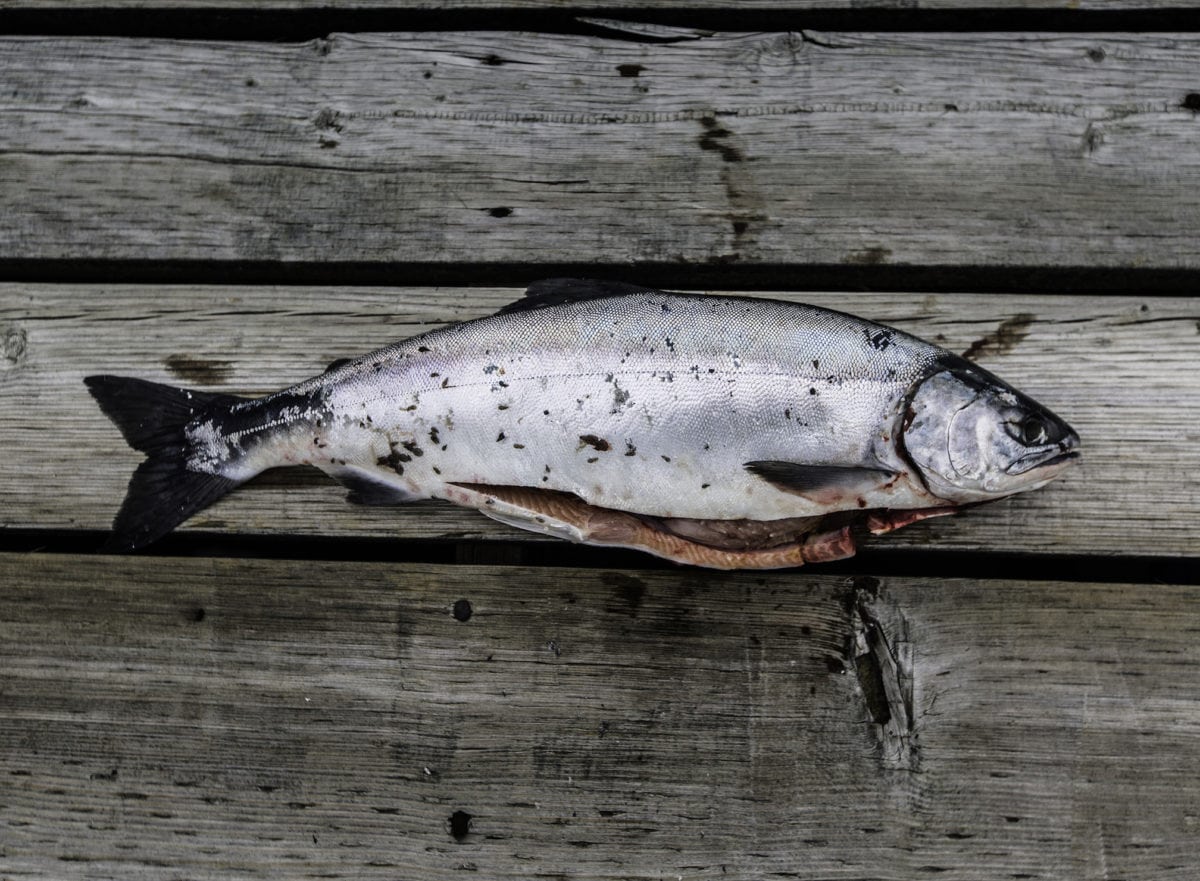
That requires additional millions of dollars in investment, which is not something the ‘Namgis want to take on. That’s why Kuterra was busy in 2017—searching for a buyer or investor willing to take the land-based farm to the next level.
Guy Dean is chief sustainability officer for Albion Farms & Fisheries, one of the partners in Kuterra and the firm responsible for marketing the fish. Dean admits there have been a “ton of challenges,” but says that Kuterra fish are selling well and fetching premium prices at Safeway and high-end restaurants like Hawskworth in Vancouver, British Columbia.
Though still in its infancy, land-based salmon aquaculture is showing promise elsewhere. Last spring Atlantic Sapphire USA, a subsidiary of the Norwegian firm Atlantic Sapphire A/S, began building a USD $350-million land-based facility that—by build-out in seven years—will produce an estimated 100,000 tonnes of Atlantic salmon. CEO Johann Andreassen says the company plans to eventually supplant chicken, beef and pork as the American consumer’s choice for protein. It’s a bold endeavour.
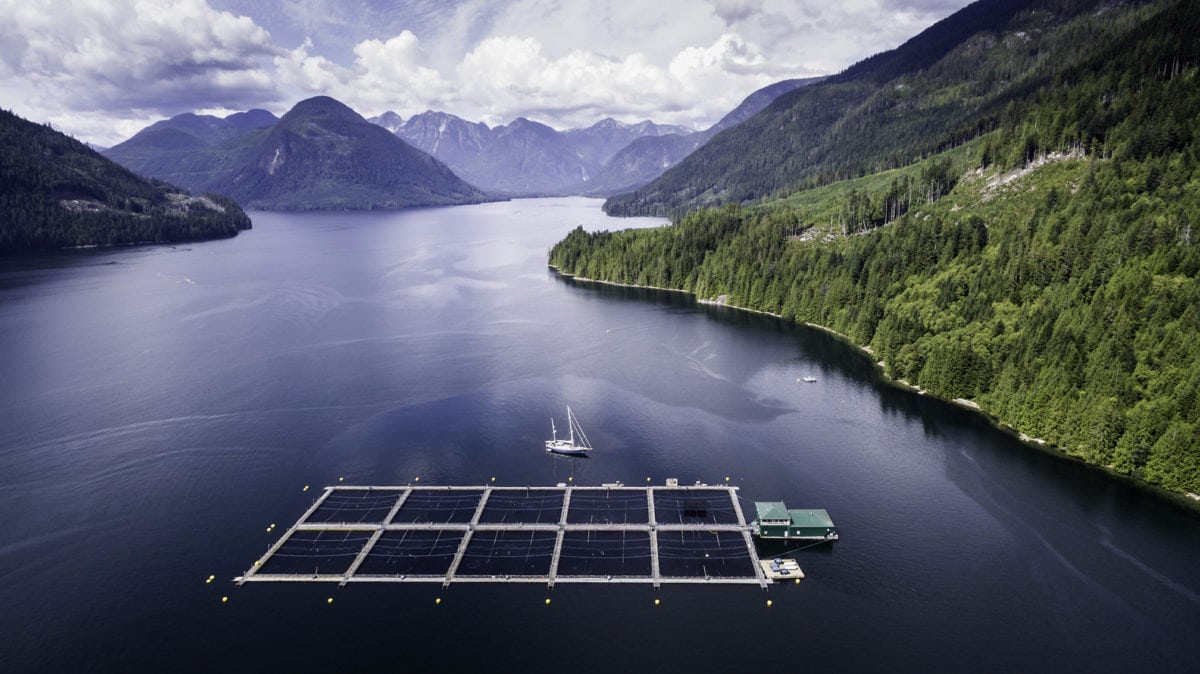
In British Columbia, the battle over open-net pen fish farming rages on. It would be beyond naive to place all the blame for wild salmon declines on fish farming. “Fish farms obviously should draw some attention, but they shouldn’t be the main focus. There are lots of other things going on out there that we may or may not be able to influence,” said Randall Peterman, professor emeritus at Simon Fraser University and a senior scientist with the university’s Quantitative Fisheries Research Group, in a recent interview in Business in Vancouver.
A century of commercial fishing has put untold pressure on stocks. Hundreds of salmon streams have been degraded or lost completely to urbanization, logging and other industrial activity. How quickly we forget that the mighty Columbia River’s once bountiful salmon populations were largely sacrificed to hydroelectricity generation. And, as the climate warms so too does the ocean. The myriad complexities of salmon conservation would give any fisheries manager a headache.
Last September the Monterey Bay Aquarium’s Seafood Watch program, thought to be the gold standard in seafood sustainability assessment, upgraded its rating of BC farmed salmon from “avoid” to “good alternative.” Not surprisingly, activists like Dan Lewis panned the upgrade, saying it made a mockery of Seafood Watch. The salmon farming industry, on the other hand, welcomed the news, a lone bright spot in an onslaught of negative publicity. Ian Roberts, manager of media and communications for Marine Harvest, calls the upgrade a vindication of sorts, proof that the industry is getting some things right.
Roberts may have one of the toughest jobs in the industry: selling Marine Harvest—the Darth Vader of aquaculture, to many—to an ever-skeptical BC public.
 “I think anyone would accept that farming, whether on land or in the ocean, has some impact.” Roberts tells me one day over coffee in Willow Point near Campbell River, as a southeast rain lashes sideways. “Could we do things better? Yes of course, but I think we have learned a lot as an industry, and are willing to accept when we have made mistakes but also call ‘bullshit’ at other times.”
“I think anyone would accept that farming, whether on land or in the ocean, has some impact.” Roberts tells me one day over coffee in Willow Point near Campbell River, as a southeast rain lashes sideways. “Could we do things better? Yes of course, but I think we have learned a lot as an industry, and are willing to accept when we have made mistakes but also call ‘bullshit’ at other times.”
Like Roberts, Kerra Shaw, the DFO’s senior aquaculture biologist, is accustomed to being on the receiving end of anti-fish farming vitriol. She runs a program that monitors benthic impacts, fish escapes, incidental catches and marine mammal conflicts related to fish farming, and aims at strengthening the licensing requirements for salmon aquaculture. She says it’s a work in progress, like any sort of human economic activity that is trying to improve its practices. However, Shaw argues that fear mongering and misinformation have skewed the public’s perception of fish farming.
“The majority of all of the food on our plates is farmed, yet farmed fish seems to be unacceptable to many people,” Shaw says. “Farmed salmon can be a sustainable food for people and it has much less environmental cost or impact than all land-based protein production, for all metrics you can measure.”
Shaw believes the fierce resistance may simply boil down to the fact that, given the complexity of the other issues affecting salmon, such as commercial fishing pressure, habitat loss and the reality that our salmon are fished by other nations like China, Japan, Russia and the United States before they return to our waters, makes fish farming an easy, local target.
However John Werring, a senior science and policy advisor with the David Suzuki Foundation, doesn’t buy this defence of salmon farming. Werring believes that comparing land and ocean farming is a case of apples and oranges, the difference being that farmed salmon excrete pathogens directly into an environment shared with wild fish.
“That’s why we’re saying no to any expansion of production and [advocating for the] removal of farms from key migratory routes until we answer that question about the threat of disease transmission to wild stocks, and we’d like to see an eventual transition to closed containment,” says Werring, who sits on the provincial Minister of Agriculture’s Advisory Council on Finfish Aquaculture. He notes that wild salmon have declined in every northern hemisphere country that has embraced salmon farming, including Scotland, Ireland and Norway, where an estimated half a million farmed salmon escape into the wild annually. That’s why he applauds Morton, as polarizing a figure as she has become, for doing the science that he says industry should be doing.
John Werring, a senior science and policy advisor with the David Suzuki Foundation, doesn’t buy this defence of salmon farming. Werring believes that comparing land and ocean farming is a case of apples and oranges, the difference being that farmed salmon excrete pathogens directly into an environment shared with wild fish.
Back at the Pacific Biological Station, Miller tries to make sense of our troubled relationship with the companies that farm fish in our oceans. “The fact is people on the West Coast are passionate about wild salmon. They care.”
We do indeed care. On a spring day I follow Jim Palmer along a faint game trail in the upper headwaters of Morrison Creek, a beautifully productive salmon stream in British Columbia’s Comox Valley that is fed year-round by cold spring water, maintaining the conditions salmon love. Palmer has belonged to the Morrison Creek Streamkeepers for 20 years, one of dozens of volunteer groups that scrape funds together and donate precious time to ensure salmon have a healthy stream to return to and spawn in. But it’s more than just counting the number of returning salmon; it’s the knowledge that a healthy salmon stream nourishes an entire matrix of flora and fauna, and, in some ways, nourishes the soul of people like Palmer.
Palmer and I bust out onto an old logging road and he stops to point to a water-filled ditch, one of many small tributaries that gather to form Morrison Creek. Coho fry dart in the shadows. Salmon are amazingly resilient, despite the vagaries of human interference. Given half a chance they will find a gravel bed in which to spawn. And we know that escaped salmon are capable of colonizing a stream. In 2000, University of Victoria ecologist John Volpe led research, later published in the Journal of Conservation Biology, that showed conclusively that escaped Atlantic salmon had spawned and reproduced in a West Coast stream, in this case the Tsitika River, which flows into Robson Bight. Though there has been no evidence since then that invasive Atlantics have established a permanent toehold in a Pacific stream, Volpe’s research raised eyebrows. Are we playing Russian roulette with the open-net pen salmon farming industry and the still-undetermined threat posed by diseases like PRV and HSMI? That question still swirls in the water like a fuel spill—the way it has since the first Atlantic salmon farms appeared on this coast 40 years ago.
Andrew Findlay
Andrew Findlay is an award-winning journalist and photographer with a home base on Vancouver Island. Born and raised in British Columbia, he continues to draw inspiration from the people, places, triumphs and travails of the Canadian West, however he ranges across the globe in pursuit of stories. Andrew’s journalistic interests are many; he enjoys peeling back the complex layers of social, environmental and business issues, but is also inspired by travel and outdoor adventure. Magazine and newspaper assignments have taken him to lands and cultures as diverse as the Great Bear Rainforest of BC, the remote mountains of northwestern Guatemala and the frozen ice hockey ponds of northern India.
Related Stories
Eight Minutes in British Columbia
Check out this epic re-edited segment of James Heim shredding BC mountains from Matchstick Productions. Quality action…
The Hippie Utopia That Was Lund, British Columbia
A new documentary chronicles the love, uncertain liberty and all-American pursuit of happiness that found its way to…
Why You Tour Contest
This has nothing to do with our magazine, other than the fact that we're big fans of CMH (Hans Gmoser is a Kootenay…
Take a Tour of the Cannabis Innovation Centre in Comox, British Columbia
Since legalization in 2018, Canada’s cannabis industry has predictably grown at a healthy rate. As the number of…


